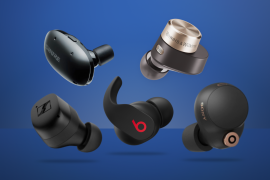I went to Austria to improve my sking with Carv – did it work?
Carv is a digital ski coach - I wanted to find out if it could cope with the challenge of training me to be a better skier
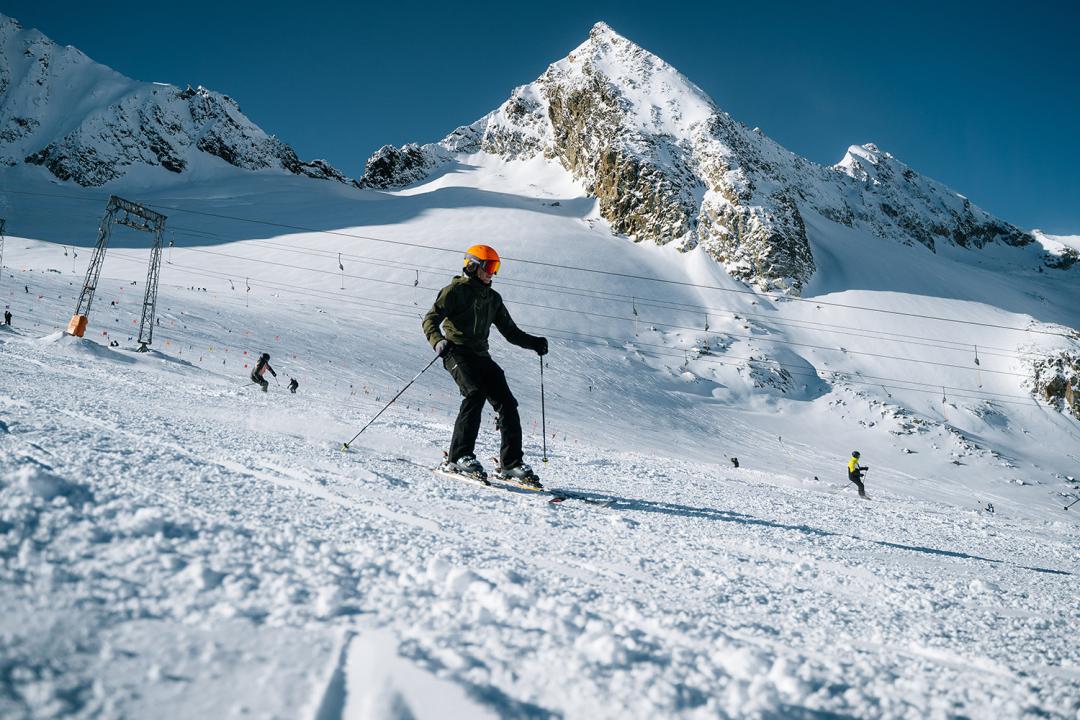
If you’re a skier, you’ll know that to improve your skiing you normally need to employ the services of a ski instructor. Which is great, but there’s a couple of issues with them – they’re expensive and your lessons are restrictive in terms of what you do for the rest of your ski holiday.
Carv is a combination of app and hardware that’s designed to improve your skiing as you go. And the best thing about it is that you can use it as much or as little as you want or need. So I packed some Rab ski wear, Wildhorn goggles and Giro helmet and before I knew it, I was standing on Stubai Glacier in Austria. The aim was to find out just how good Carv is – could the system help me ski better?
Now, Carv isn’t a budget system but the pricing does make sense. The gear costs $199/£199 and then you need to add a subscription for $79/£79 for six days or $149/£149 per year ($99/£99 if you buy two years in one go). But the cost is a lot less than getting a ski instructor for even a couple of hours across a ski week. And once you’ve got the gear, paying for the weekly pass for irregular ski holidays does make sense.
With audio is better
Although you can use it without headphones, the core idea is that you get audio feedback through headphones (you can use anything that works with your phone and fits alongside your ski helmet). I used Apple AirPods Pro, although I think I would have been better off using the standard AirPods (3rd generation) for example. Anything that sticks out of your ears a bit is going to be less comfortable.
The product has been out for a while, though it’s building traction – there were over 22,000 members last winter, who have had over 50 million bits of feedback through the app. Carv says its users feel they are more interested in improving their technique and more motivated too.
How Carv works
The app has been iOS only for a while (you can integrate it with Apple Health to contribute to your ‘rings’) but is now available for Android. As well as the app itself, the product works using two highly sensitive waterproof insoles with 72 pressure sensors, an accelerometer and gyroscope – so similar to the movement tech inside your phone. They’re around 300g each and 3mm thick.
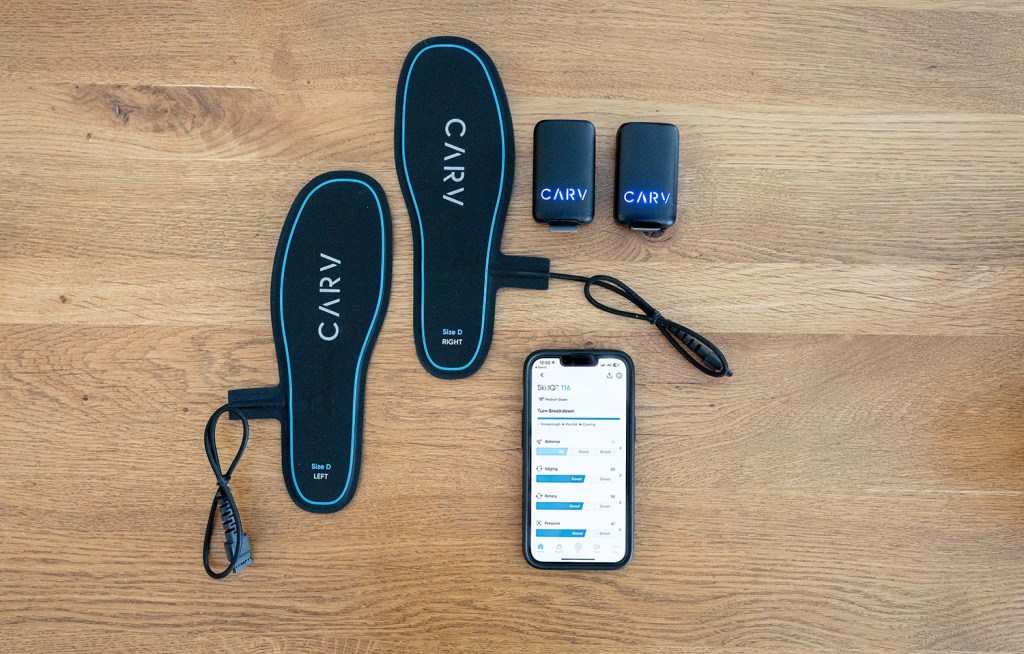
They go in your ski boots outside of the liner (so you don’t feel them in the boot). The insoles are available in three sizes and connect via a cable to a hardly noticeable battery pack that you can clip onto your bootstrap (battery life is good for around three days of asking).
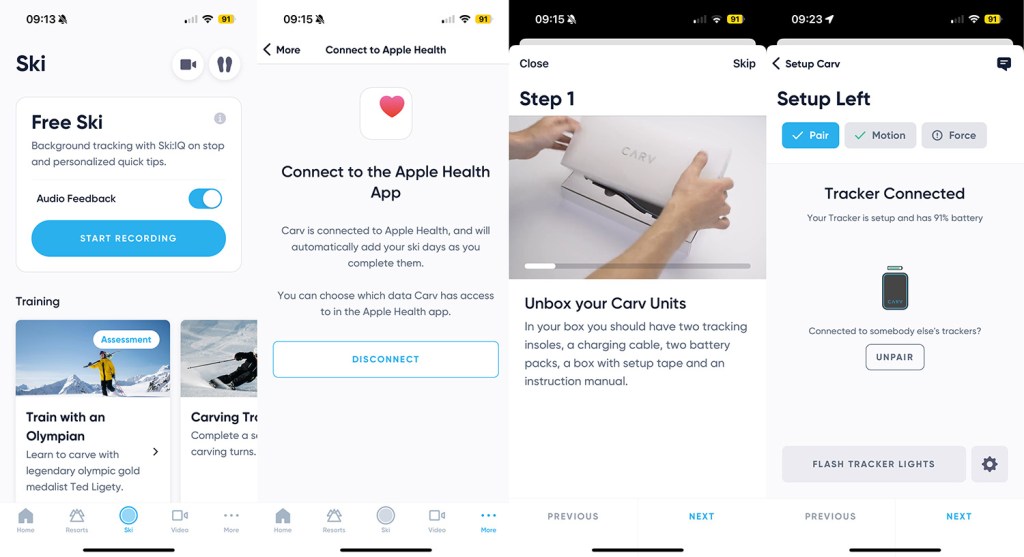
This setup connects to your phone via Bluetooth and needs to be set up and calibrated. This process takes a little while the first time, around 15-20 minutes. But the app is excellent at guiding you through the ins and outs of the process.
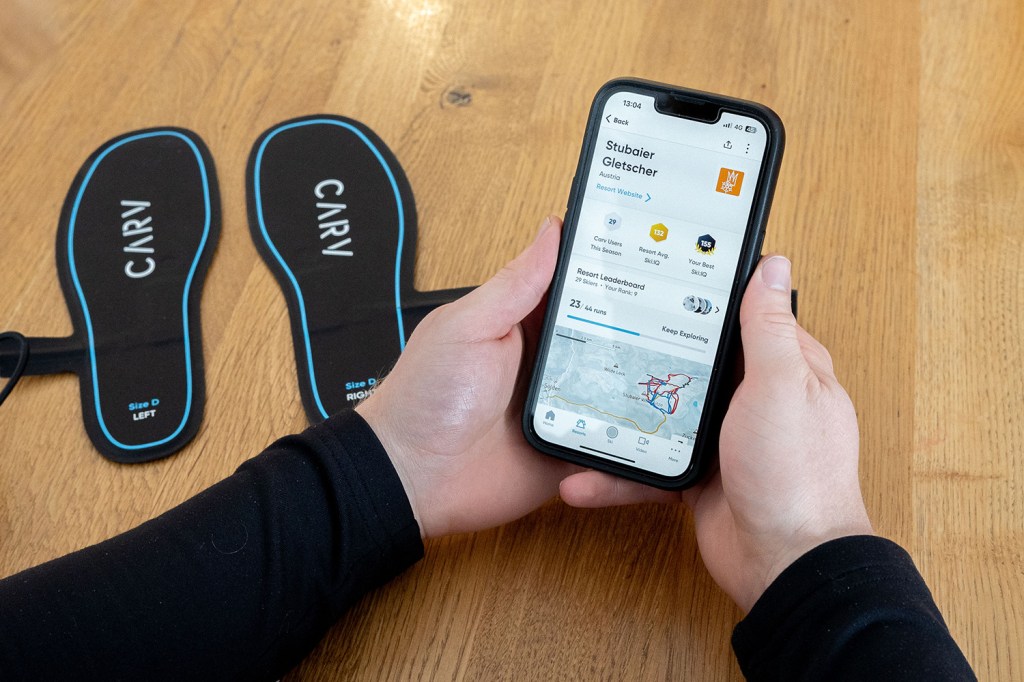
Now, I’m not a beginner, but I’m not anything like advanced. It was pretty clear after a couple of days that while Carv could help me a lot, it is really aimed at more advanced skiers or at least those who have skied for a few weeks in their life. It’s not a product for beginners. While the core idea is to train, there are some gamified ways the app does this, with audio signals, feedback and more depending on which training programme or skills game you choose. You can also Free Ski, with simple tips to help you. It means you can use the coaching as much or as little as you want.
Around the app
There’s some really clever tech at play. For example, Carv will automatically detect the difficulty and snow type that you’re on. As you go back up on the ski lift, the app auto-detects you’re going back up (clever) and gives you some tips to work on. This could be a single point to improve or, if you’re on one of the more advanced training programmes like ‘train with an Olympian’ it gives you more advanced feedback.
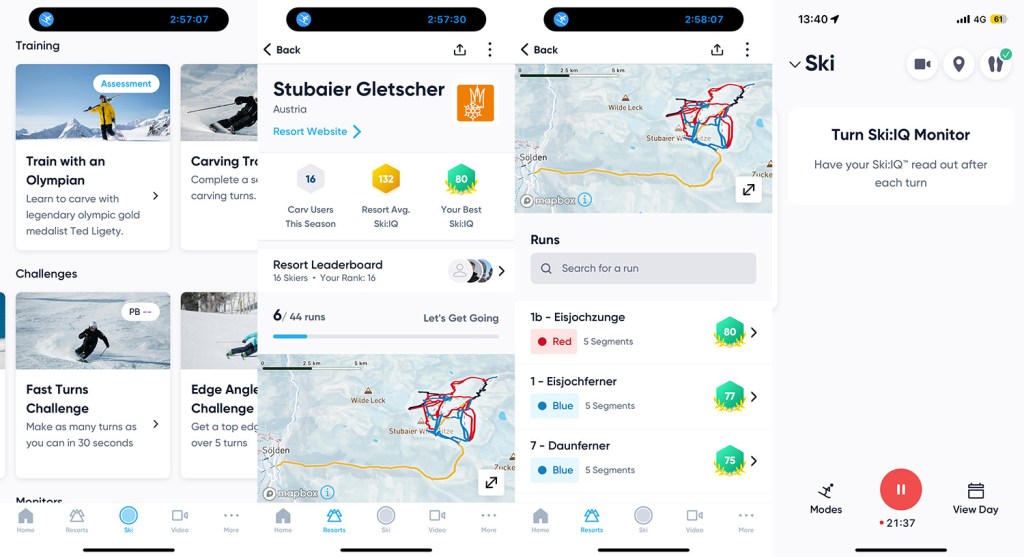
The games include different levels – so for example in one I was attempting to cut in with both skis in a similar way – edge similarity. I had to make 10 successful turns above a set target to progress. It was great fun trying to better myself.
The key factor is your Ski:IQ. This is a simplistic way of showing your progress and it only improves upwards – though you can see Ski:IQ scores for individual runs or exercises and even individual turns to see where things went even better or, in my case, where things had gone very wrong! There’s even a mode where it will read you the Ski:IQ for each turn so you can get an instant rating. The best skiers have a rating of 160+. Mine ended up in the 90s which was an improvement over where I’d started out.
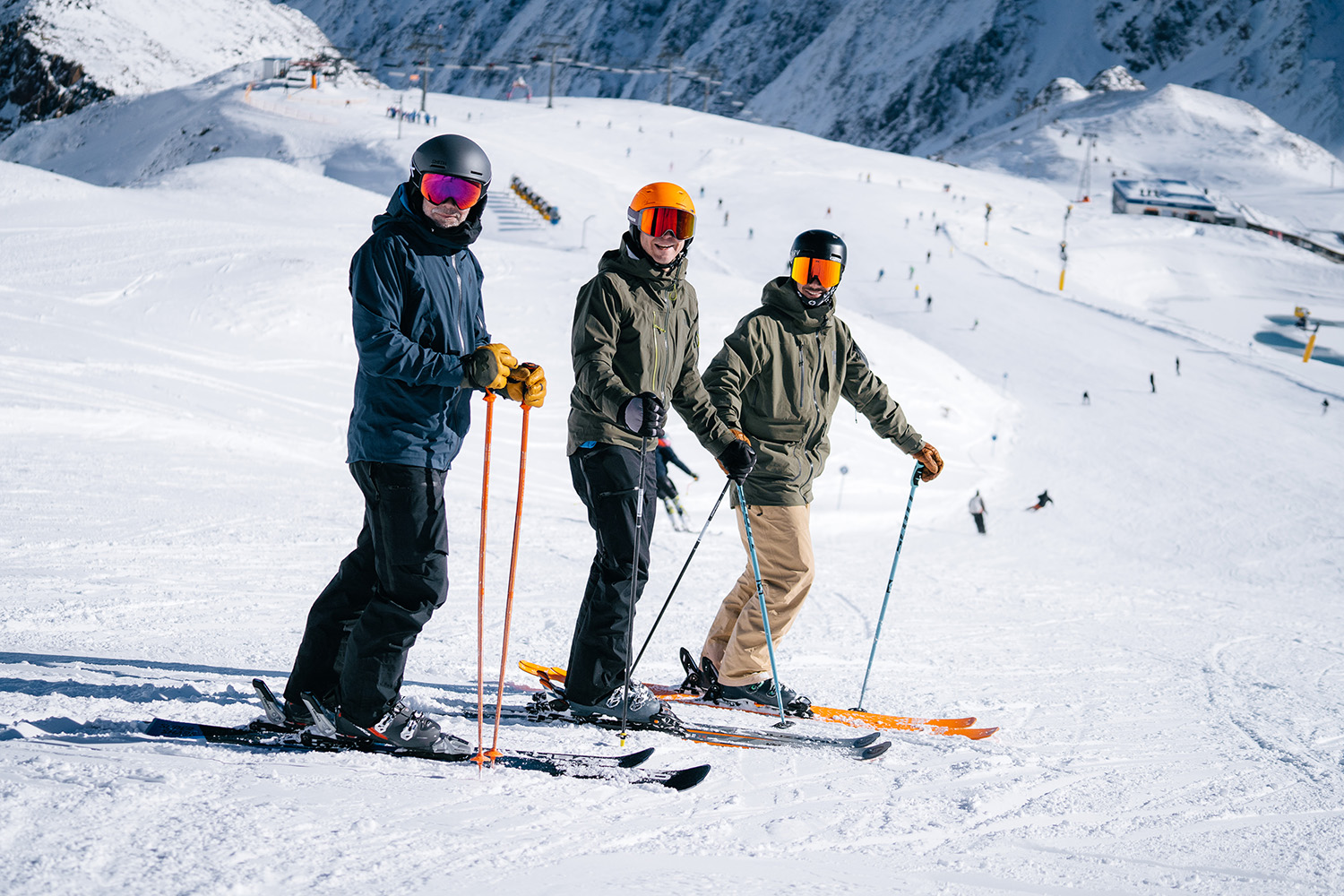
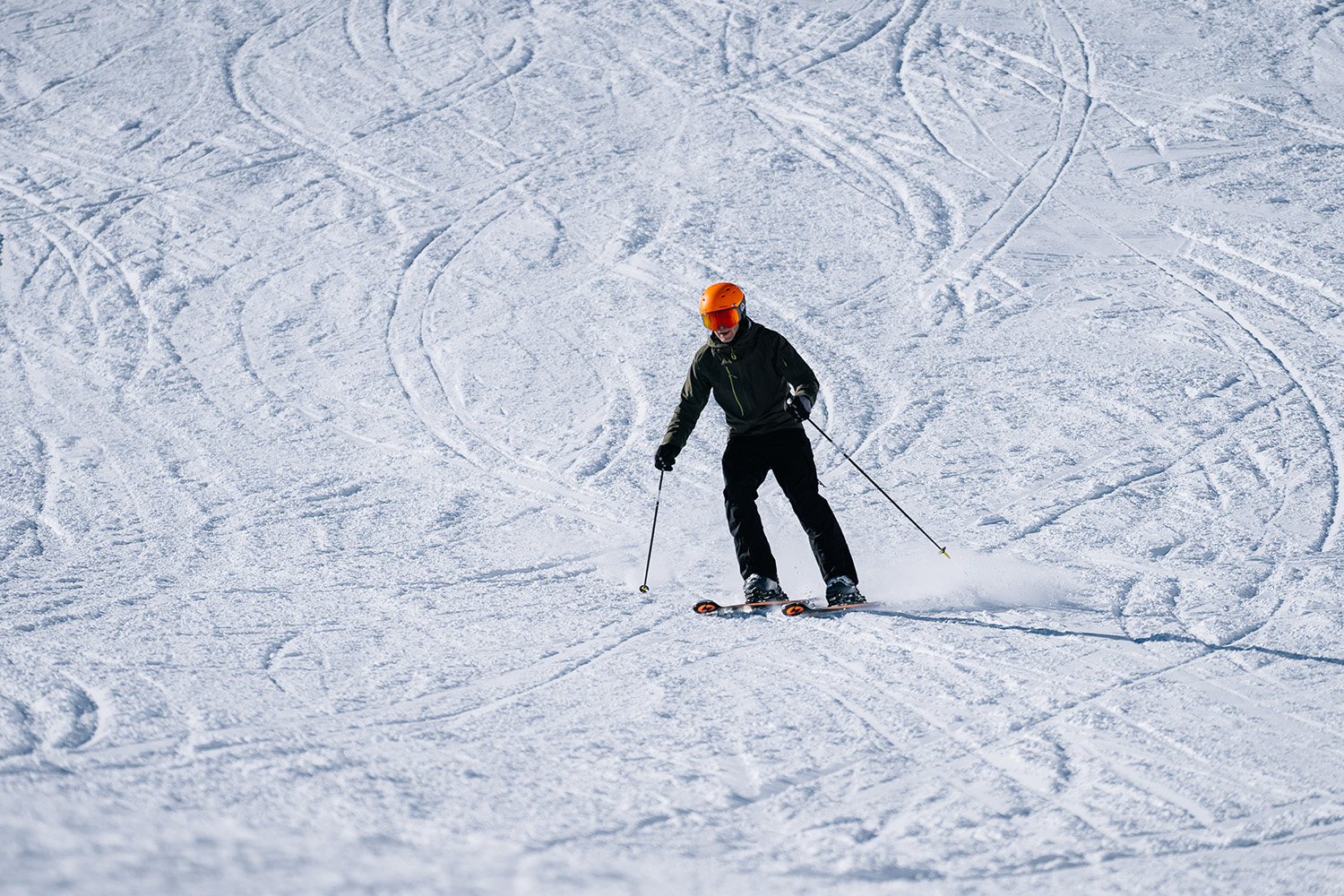
You can also see what other Ski:IQs were at the same resort or on the same runs. Naturally, everything is tracked so you don’t need to use another ski run tracking app to track your runs as Carv can do all that for you.

Carv is proud of its data and it’s all based around turns – over 340 million turns have been recorded, in turn feeding its algorithms and intelligence and helping the app better understand skiing techniques.
There are also some video tutorials, too – I found the only challenge in watching these on the slopes was a patchy data connection. Video Coach is Carv’s newest innovation. It sees how you ski and gives you specific improvements. This tech is really very clever as it enables someone else with Carv to video you with their phone inside the Carv app and link it to you – so it’ll be recorded on your Carv account. It enables you to choose a nearby user that you’re videoing.
So did Carv help me to be a better skier?
Carv definitely helped me think about my technique more and try and improve it, whereas the last couple of times I have been sking I’ve just relied on previous instruction that I’ve had and suggestions from other people in my group. It would be interesting how I could combine it with a family ski holiday – would I need to go off on my own (probably) or could I still get at least some tuition while tearing down the slope in the wake of a fearless 10 year-old?
But I guess that actually proves what I like most about Carv; it can be as intrusive (or not) as you like. If you have the time, you can be intensively trained. But if you don’t or you’re with others, you can just get a few tips while you’re on the way back up in the lift. The gamified challenges are really fun too, and I could definitely see myself enjoying that when I go next time as well.


